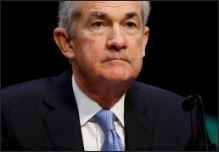Despite Fed Liquidity, Mall Value Plunges
Since 2008 the Federal Reserve has done all it can to levitate asset prices. The central bank quadrupled the size of it’s balance sheet, as Rueters explains “Assets include bonds the Fed bought once it had cut interest rates to zero and needed still more firepower to stabilize the economy after the 2008 global financial crisis.”
In some cases it just hasn’t worked, for instance, the retail recession is doing its work, despite the Fed, significantly repricing retail brick and mortar locations.
Wolf Street.com reports on the Independence Center, built in 1974, with 88 stores anchored by Sears, Macy’s, Dillard’s, and Dick’s Sporting Goods. Simon Properties Group (SPG), the largest mall landlord in America, owned the more than one million square feet in a suburb of Kansas City, Missouri.
The mall was encumbered by a $200 million commercial real estate mortgage, well supported by the 2007 value for the property of $250 million. However, by 2017, SPG defaulted because it was “unable to repay the loan at maturity due to the size of the loan compared to the net operating income that the property generates and the tenants inability to increase sales due to the economic challenges.”
SPG walked away despite the mall having tenants and being in operation, “knowing that the entire mall wasn’t worth anywhere near the $200 million required to pay off the mortgage. It then removed the name of the mall from its website. And it was up to CMBS investors to eat the loss, “ writes Wolf Richter.
So how much is more than a million square feet of retail mall worth in the midwest? Reportedly, in May of 2017, the mall’s value had dropped to $136 million.
However, when the rubber met the road at the foreclosure sale this February, International Growth Properties (IPG) was the winning bidder offering $63.3 million.
The sale generated the largest CMBS loss ever, a $149.7 million loss for commercial mortgage-backed securities investors, for a loss ratio of 74.9%.
Is this loss an aberration? No, Lane4 Property Group said that the “setback” for Independence Center “is part of a larger trend” that had already “claimed such former major Kansas City shopping destinations as Metcalf South Mall, Metro North Mall, Mission Mall, Antioch Center, Bannister Mall, Indian Springs Mall and the Great Mall of the Great Plains.” And Independence Center is one of only “two remaining true indoor malls” in the Kansas City metro area.
I’m told the Heartland Mall in nearby Topeka Kansas has also shut its doors.
As we feel for the CMBS investors, we must remember what Murray Rothbard explained about the value of recessions,
recessions are not irrational acts of God nor random events. They perform a vital function: washing out the unsound malinvestments of the preceding inflationary boom, and redirecting land, labor, and capital to their most efficient uses in the service of consumers. The longer and the more intense the distorting inflationary boom, the greater the work that the cleansing, corrective recession will have to do. This is the insight of the “Austrian” theory of business cycles. But this means that the best that can be done about a recession is for the government to keep hands off—to allow the recession to do its crucial work as quickly as possible. If the government intervenes to allay, check, or stop the workings of the recession, it will only transform a short, sharp recession into a chronic, stagnating depression. The choice is either: transitory acute infection, or a chronic, grinding debilitating disease.
The money Bernanke and Yellen created through QE and Operation Twist evidently didn’t find its way to the Midwest or maybe, just maybe, the Fed prolonged the agony.






